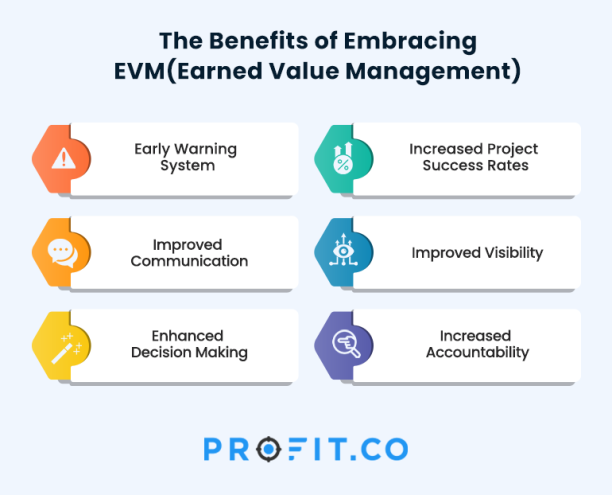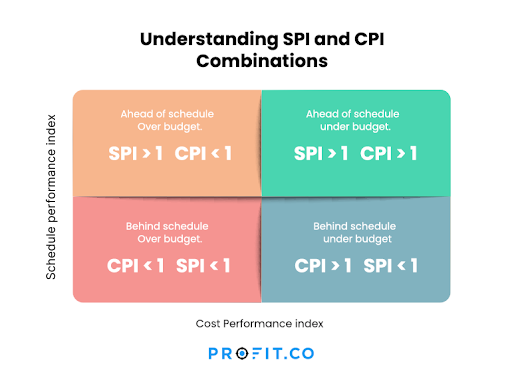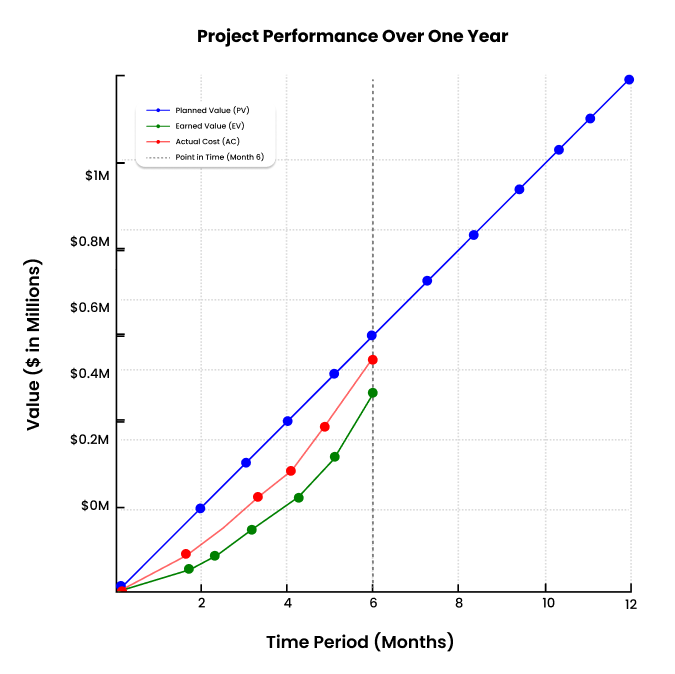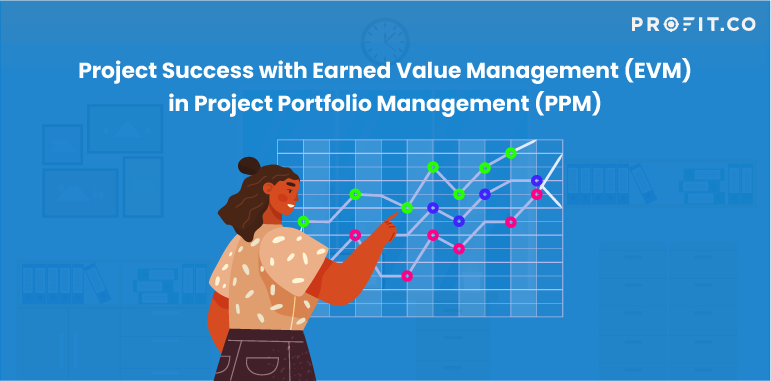In the fast-paced world of project management, staying ahead of schedule and budget is crucial. But how do you objectively assess progress and identify potential roadblocks before they derail your entire portfolio? One of the most effective tools for achieving this is Earned Value Management (EVM), a powerful framework within the Project Portfolio Management (PPM) toolbox. EVM provides a comprehensive framework for integrating scope, schedule, and cost parameters, allowing project managers to assess project health at a glance.
What is Earned Value Management (EVM)?
Earned Value is a key metric in project management that assesses a project’s progress by comparing the planned budget to the actual work completed. It quantifies the value of work accomplished based on the project’s original plan. By comparing the earned value to the planned budget and actual costs, project managers can gauge project performance, identify variances, and make informed decisions to keep the project on track. Essentially, earned value offers a financial snapshot of project health, revealing whether a project is over or under budget and ahead or behind schedule.
Steering Your Projects in the Right Direction
The primary purpose of EVM within PPM is to provide an early warning system for project performance issues. Using EVM, project managers can identify deviations from the plan early and promptly take corrective actions. This proactive approach enhances decision-making, optimizes resource allocation, and improves the chances of project success.

The Benefits of Embracing EVM in PPM
In the fast-paced world of project management, staying on track with both schedule and budget is crucial. For project managers and stakeholders, one of the most effective tools for achieving this is Earned Value Management (EVM). By integrating EVM into Project Portfolio Management (PPM), organizations can gain numerous advantages:
- Early Warning System: EVM provides early detection of potential problems, allowing timely corrective actions.
- Improved Communication: Facilitates clear, data-driven discussions with stakeholders.
- Enhanced Decision Making: Informed decisions are made based on objective performance metrics.
- Increased Project Success Rates: Proactively addresses issues, leading to on-time and on-budget delivery.
- Improved Visibility: Offers a clear and quantitative view of project performance.
- Increased Accountability: Ensures all stakeholders are aware of project status, fostering responsibility.
“As knowledge management is a means not an end”
Core Concepts in EVM
EVM revolves around a set of key metrics
- Planned Value (PV): The budgeted cost of work scheduled for completion at a specific point in time
- Earned Value (EV): The budgeted cost for the work actually completed by a specific date.
- Actual Cost (AC): The total amount of money spent on the project up to date.
From these core metrics, we can derive valuable insights through variances
- Schedule Variance (SV): EV – PV (Indicates if you’re ahead or behind schedule)
- Cost Variance (CV): EV – AC (Highlights cost overruns or underruns)
Performance Indices: Putting the Variances in Perspective
- Schedule Performance Index (SPI): EV / PV (An SPI < 1 signifies falling behind schedule)
- Cost Performance Index (CPI): EV / AC (A CPI < 1 indicates cost overruns)
- To-Complete Performance Index (TCPI): (BAC – EV) / (BAC – AC) (Indicates how efficiently the remaining work must be performed to stay within budget)
Understanding SPI and CPI Combinations:

These indices are invaluable for project managers, providing insights into both schedule and cost efficiency. They inform decisions on where to focus efforts, whether on accelerating timelines or controlling costs.
TCPI for Efficient Project Execution
The To-Complete Performance Index (TCPI) is a critical metric that helps project managers understand how efficiently the remaining project work must be performed to stay within the approved budget. A TCPI greater than 1 indicates that the remaining work must be performed more efficiently than the work completed to date, while a TCPI less than 1 suggests that the remaining work can be performed less efficiently while still staying within budget. This metric is particularly useful for forecasting future performance and making necessary adjustments to resource allocation and project strategies.
Want to See EVM in Action?
Bringing it to Life: Let’s Talk Examples.
Imagine a project with a planned budget of $1 million over one year. If we focus on the first six months, where 50% of the work is scheduled to be completed, the Planned Value (PV) would be $500,000. If the team completes only 35% of the work, with actual costs of $450,000, the Earned Value (EV) would be $350,000, and the Actual Cost (AC) would be $450,000.
Schedule Variance (SV): The project is $150,000 behind schedule, as less work has been completed than planned.
Cost Variance (CV): The project is $100,000 over budget, as costs are higher than anticipated for the amount of work done.
Cost Performance Index (CPI): The value of work completed for each dollar spent is only $0.78, indicating inefficiency in cost management.
Schedule Performance Index (SPI): The project is progressing at only 70% of the planned rate, highlighting schedule inefficiencies.

This example illustrates that the project is both behind schedule and over budget. The SV indicates that less work has been completed than planned, and the CV shows that costs are higher than anticipated for the amount of work done. The CPI and SPI are key performance indicators that highlight cost and schedule performance inefficiencies.
Budget Calculation in EVM Context
Budget at Completion (BAC): BAC represents the total planned budget for the project. It’s determined during the planning phase and includes all
anticipated expenses:
- Labor Costs: Wages for project team members.
- Materials and Equipment: Necessary materials and tools.
- Subcontractor Fees: Payments to external vendors.
- Overheads: Indirect costs like utilities and rent.
- Contingency Reserves: Funds for unexpected expenses.
Example Calculation
- Labor Costs: User A: 100 hours at $50/hour, User B: 150 hours at $60/hour
- Materials and Equipment Costs: $3,000
- Subcontractor Fees: $2,000
- Overheads: $1,500
- Contingency Reserves: $2,000
Total Budget (BAC)
BAC = ($5,000 + $9,000 + $3,000 + $2,000 + $1,500 + $2,000) = $22,500
Expense Calculation in EVM Context
Tracking actual expenses is crucial for monitoring project spending. The total expense includes all costs incurred, which are used to calculate AC
Example Calculation
- Labor Costs: User A: 120 hours at $50/hour, User B: 140 hours at $60/hour
- Materials and Equipment Costs: $3,500
- Subcontractor Fees: $2,200
- Overheads: $1,600
Total Expense
Total Expense = ($6,000 + $8,400 + $3,500 + $2,200 + $1,600) = $21,700
“Total expense” and “actual cost” are used interchangeably in EVM to describe the total amount spent on project work up to a specific date. Both are critical for assessing project performance and ensuring effective cost management.
Integrating Budget at Completion (BAC) and expense calculations into Earned Value Management (EVM) is crucial for maintaining a comprehensive and accurate picture of project performance. This integration allows project managers to monitor and control project costs effectively, ensuring that the project remains on schedule and within budget.
Conclusion
By integrating EVM into your PPM strategy, you gain clear visibility into project performance, allowing for better tracking, management, and decision-making. EVM not only helps identify potential issues early but also improves communication and accountability among stakeholders. This structured approach is key to achieving successful project outcomes, ensuring that projects are completed on time and within budget.
Ready to Transform Your Project Management? Start with Profit.co Today!
Related Articles
-
How Resource Leveling Can Keep Your Projects from Crashing and Burning
In project management, trying to do it all at once is a fast track to chaos—missed deadlines, stressed-out teams, and... Read more
-
Turning Knowledge Into Action for Project Portfolio Success
Managing a bunch of projects at once can feel like juggling flaming swords. It’s exciting. It's chaotic. And sometimes, it... Read more
-
How to Create an Effective Proof of Concept (POC): Best Practices & Examples
You have an idea, and it’s really a good one. You tell your roommate and friends, but they don’t believe... Read more
-
Construction Project Management: Best Practices and Tips for Success
Project management in construction is a responsibility. It requires precision, leadership, and the ability to overcome complexities that come with... Read more

